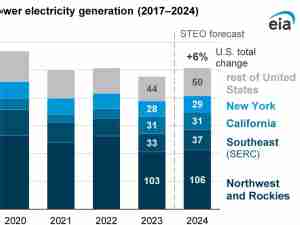Europe’s cold snap sees gas demand surge – with the UK being the highest priced market as wind generation falls. French nuclear power starts to make a come comeback just as Sweden takes a plant offline.
Europe cold snap sees gas demand surge – with the UK being the highest priced market as wind generation falls.
French nuclear power starts to make a come comeback just as Sweden takes a plant offline.
Europe is currently undergoing a cold weather snap that is expected to see sustained high power prices this week, following a surge in prices last week.
For the first time since April, Italy was surpassed as the highest-priced European power market of the large countries, as the combination of cold weather and very low renewables output resulted in the UK moving ahead.
Despite this, gas prices grew only moderately last week, as liquefied natural gas (LNG) supply remains very strong, reaching a new monthly record for November, as gas demand remains relatively low amid high prices and energy-saving measures being implemented across Europe.
Power prices continue to increase across Europe and accelerated last week as the first cold wave of the year hit large parts of the continent. The increase in power prices far outpaced the increase in gas prices, as cold weather and very low wind power generation were large additional factors to a tight power supply situation.
This was particularly clear in the UK over the last week, as wind power output was very low, resulting in high prices for parts of the week.
It also resulted in the UK dethroning Italy as the highest-priced power market on a weekly average for the first time since early April.
Prices increased by 121% week-on-week, averaging €363 ($383) per megawatt-hour (MWh) for the week.
Continental Europe prices saw a more moderate increase, but also here the cold wave had a large impact, as all countries saw a double-digit increase.
Italy followed closest behind the UK with a comparatively small 37% increase as the country was less impacted by the cold wave, in addition to much less of an impact from low wind speeds.
Since gas prices only saw a moderate increase last week, Italy was therefore one of the countries with the lowest week-on-week increase and averaged €357 per MWh last week.

The gas market saw a much more modest increase in prices compared to the power market over the last week, leading to a lower level of coupling between the two markets.
The Dutch Titel Transfer Facility (TTF) spot contract increased by 5.5%, while the front month saw a 9.4% increase, ending the week at €133 per MWh and €137 per MWh, respectively.
Gas demand in the power sector saw a decline in November compared to October.
Gas-for-power demand picked up strongly during the last days of the month and the beginning of November, due to the colder weather and low wind power generation. Total demand for the first 11 months of the year also shows an increase of about 3.3% compared to 2021, in the power sector specifically.
Gas demand for all sectors has seen a large decline so far in 2022, reported to be as high as a 25% reduction year-on-year, where the industrial sector has been particularly hard hit. LNG import numbers for November show that the month reached a new record for the year, with total imports exceeding 11.4 million tonnes (Figure 2).
France, Spain and the UK combined represented well above 50% of Europe’s total imports for the last month.
Storage levels are also still at very healthy levels, above 90% for Europe aggregated as of 5 December.
For the coming week, power prices are expected to reach even higher levels in Europe.
The cold wave is expected to continue, while wind power will remain relatively low both on the continent and in the UK.
It is expected to get especially cold towards the end of this week, and hourly prices could be in the range of €500 to €1,000 per MWh for the majority of Northwest European price zones.
The UK will most likely see the highest hourly prices once again, for the same reasons as last week, and could therefore also see the highest weekly average of the large markets.
Preliminary generation data from November shows a new month with large generation changes in Europe.
Colder weather across the continent has now clearly manifested in increased power demand, with an increase of 5.2% in total generation in November compared to October.
Adjusting for fewer days in November compared to October, the increase was 8.7%.
However, compared to last year, total power generation was down by 11.1%, due to a combination of warm weather for large parts of November in addition to power demand saving measures across Europe and demand destruction, especially in the Industry.
Last week saw a large boost in French nuclear availability, as total availability now stands above 60% for the first time in many months.
Furthermore, five more reactors are planned to come back online in the coming week, which will help with the current very tight French supply situation.
The largest Swedish nuclear reactor, Oskarshamn 3, is scheduled to go offline for repairs on 9 December, making the supply situation in the region even tighter.
The plant is located in southern Sweden, a region already dependent on large imports, mainly from the north of the country, and the shutdown comes at a particularly bad time as it coincides with a cold wave.
The reactor is expected to be shut down for nine days, until 18 December and higher than otherwise expected power prices could occur in the region.
French utility EDF sold an excess of 1.5 gigawatts (GW) of capacity on average on the EPEX spot on the 5 December.
EDF also said the position would have to be repositioned in the intraday market the same day.
An error of this magnitude is highly unusual and could prove expensive for EDF, as prices are currently very high amid the cold weather and still relatively low nuclear availability in France.









